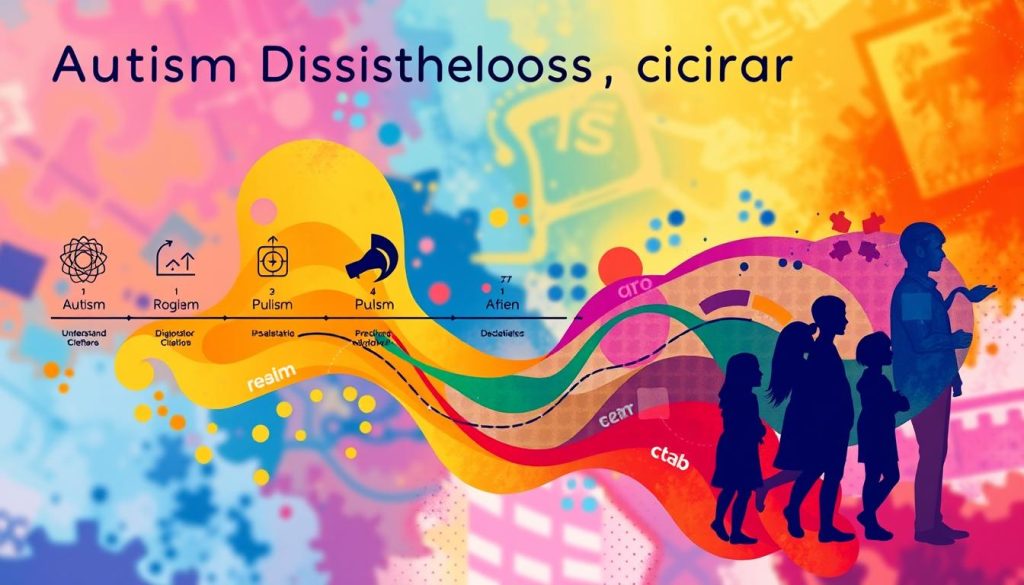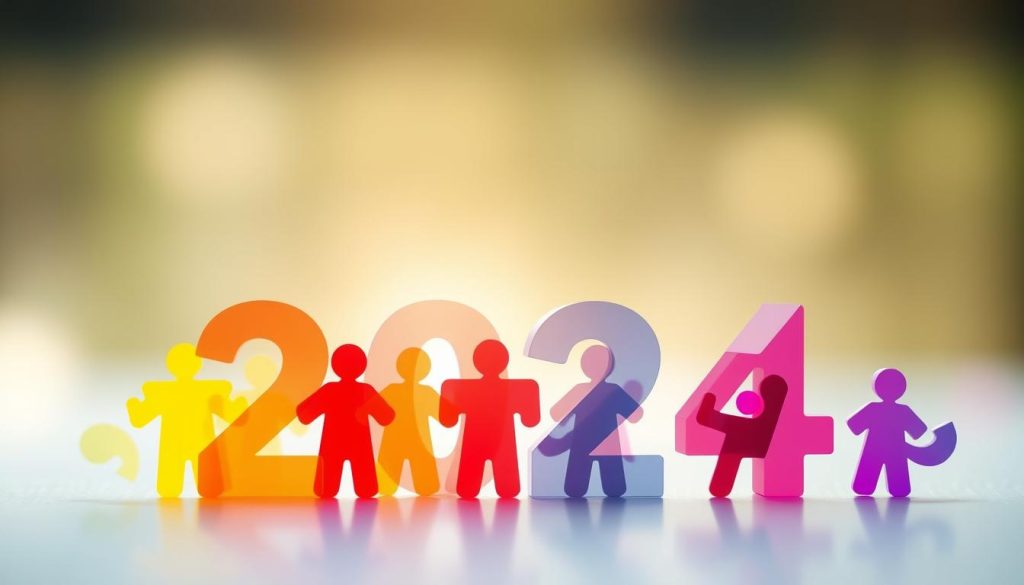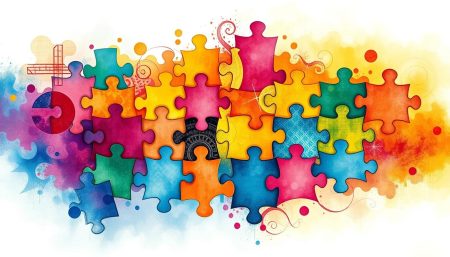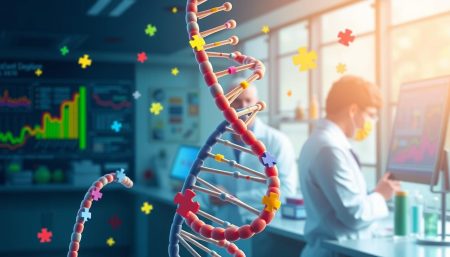The world of neurodevelopmental health is always changing. Our understanding of types of autism spectrum disorder in 2024 is at a key point. This update is important for caregivers, doctors, and teachers.
It affects more than just medical books. It changes how people with autism live and those who support them.
We will look at the newest trends and how to diagnose autism. Our goal is to give you a full picture of types of autism spectrum disorder 2024. This will help us talk more about neurodiversity and inclusion.
Join us as we dive into the details of autism spectrum disorder diagnosis. We’ll see how it impacts our world today.
Understanding Autism Spectrum Disorders
Autism Spectrum Disorders (ASD) are complex neurodevelopmental disorders. They bring big challenges in social, communication, and behavior areas. The characteristics of autism spectrum disorder vary a lot, showing how unique each person with ASD is.
It’s key to know that symptoms of ASD can be very different. Some people with ASD might be really good at things like music or math. But, they might struggle a lot with talking to others and understanding social cues.
Because of these differences, ASD is called a “spectrum.” It’s a range of conditions that share some characteristics of autism spectrum disorder. But, each person with ASD is affected in their own special way.
- Difficulties in social interaction
- Restricted interests and repetitive behaviors
- Unique differences in processing sensory experiences
Also, how we understand and diagnose neurodevelopmental disorders like ASD is always changing. This change helps improve how we teach, treat, and support people with ASD.
| Aspect | Impact on Life |
|---|---|
| Social Communication | Challenges with verbal and non-verbal communication affecting personal relationships and social integration |
| Behavioral Patterns | Preference for repetition providing comfort but potentially limiting exposure to new experiences |
| Sensory Sensitivity | May influence educational and occupational choices due to different sensory inputs being overwhelming or inconsequential |
It’s very important to understand ASD. This knowledge helps not just those with ASD but also teachers, therapists, and the public. It helps create a society that values and respects neurodevelopmental differences.
Current Autism Classification System
The way we understand and classify autism has changed a lot. This change comes from updates to major diagnostic manuals. These updates help us create treatments that fit each person’s needs better.
DSM-5 Criteria and Updates
The DSM-5 criteria for autism spectrum disorder made big changes. These changes aim to better understand the wide range of autism. Now, we focus more on how people communicate and their repetitive behaviors.
Comparing ICD-10 and DSM-5 Classifications
ICD-10 and DSM-5 have different ways of classifying autism. DSM-5 looks at autism as a spectrum, while ICD-10 sees it in categories. This difference is important because it affects how we diagnose and treat autism worldwide.
Subcategories Within The Spectrum
The DSM-5 breaks down autism into subcategories. This helps us see the wide range of abilities and challenges people face. It makes it easier for doctors and families to understand autism better, leading to better treatments and education.
| Feature | DSM-5 | ICD-10 |
|---|---|---|
| Focus | Spectrum-based | Category-based |
| Core Diagnoses | Autism Spectrum Disorder | Autistic Disorder, Asperger’s Syndrome, Other PDDs |
| Social Communication | Centralized in diagnosis | Varies by subtype |
| Behavioral Criteria | Restrictive, repetitive patterns | Less specific |
Types of Autism Spectrum Disorder 2024
In 2024, our understanding of autism spectrum disorder is growing. New research and observations are helping us see the spectrum’s diversity. This diversity supports more personalized care and understanding.
This year, we’ve seen big changes in how we classify autism. Each type has its own set of characteristics. These changes help us better diagnose and care for those with autism.
- Classic Autism – Often characterized by significant challenges in social interactions, repetitive behaviors, and speech and nonverbal communication difficulties.
- Asperger Syndrome – Individuals typically exhibit milder symptoms, mainly affecting social interaction. They often have focused interests and activities.
- Pervasive Developmental Disorder – Not Specified (PDD-NOS) – This category is for those who don’t fully meet classic autism or Asperger Syndrome criteria but show significant autistic behaviors.
- Childhood Disintegrative Disorder – Rare and severe; characterized by a pronounced regression in multiple areas of development after several years of typical development.
The types of autism spectrum disorder 2024 go beyond the main categories. They reflect the latest in diagnosis and treatment. We now see autism as a spectrum, not just different types. This view helps us create more effective care plans and supports inclusivity in treatment.
This information helps us better understand autism. It gives families, educators, and healthcare providers the tools they need. With this knowledge, we can support individuals with autism to reach their full potentials.
The Importance of Early Diagnosis
Early diagnosis of autism spectrum disorder is key for better outcomes. Recognizing early signs and using strong screening systems helps a lot. Caregivers and doctors play a big role in a child’s growth.
Spotting Early Signs of Autism
Autism signs often show up before three years old. They can be small or big. Look for little eye contact, slow speech, and a strong interest in certain things.
Finding these signs early helps parents and doctors know what to do next.
Benefits of Early Intervention
Early programs help kids with autism a lot. They work on talking, social skills, and learning. How well these programs work depends on catching autism early.
Screening Tools and Processes
There are special tools to spot autism early. The Modified Checklist for Autism in Toddlers (M-CHAT) and the Ages and Stages Questionnaires are examples. Doctors use these to start figuring out if a child has autism.
| Screening Tool | Age Group | Focus Area |
|---|---|---|
| Modified Checklist for Autism in Toddlers (M-CHAT) | 16-30 months | Communication, behavior |
| Ages and Stages Questionnaires | 1-5 years | Overall development |
| Screening Tool for Autism in Toddlers and Young Children (STAT) | 24-36 months | Play-based interaction |
Autism Diagnosis Criteria in 2024
As we near 2024, the way we diagnose autism spectrum disorder is changing. New insights and methods are making a big difference. This section will look at the latest changes in autism diagnosis criteria. We’ll also see how technology is playing a bigger role in diagnosing autism.
Changes and Developments in Diagnostic Criteria
The autism diagnosis criteria have seen big changes. These changes come from research and feedback from doctors and autism advocates. They aim to make diagnosis more accurate and inclusive, recognizing the many ways autism can show up.
One key change is focusing more on how autism develops over time. This move away from a one-size-fits-all approach is helping.
Impact of Technological Advancements on Diagnoses
Technology has made diagnosing autism spectrum disorder more precise. New tools like advanced imaging and AI are giving us fresh views on autism. They help us understand brain development patterns better.
By using detailed behavioral data and genetic markers, experts can now understand autism in a more detailed way. This could lead to earlier and more accurate diagnoses.
| Year | Technology | Impact on Autism Diagnosis |
|---|---|---|
| 2020 | Machine Learning Algorithms | Enhanced pattern detection in developmental data |
| 2022 | Enhanced Neuroimaging | Improved visualization of neural pathways |
| 2024 | Genomic Sequencing | Identification of genetic markers linked to autism |

Neurodevelopmental Disorders Related to Autism
Looking into neurodevelopmental disorders shows many conditions that share signs with autism spectrum disorders. This connection helps us understand autism better but makes diagnosing harder. It’s key to know the similarities and differences to create the right help and support.
Some neurodevelopmental disorders have traits that might look like autism spectrum disorders. These include trouble with talking, social issues, and repeating actions. Yet, each disorder has its own special signs that set it apart from autism. This affects how we diagnose and treat each condition.
- Attention Deficit Hyperactivity Disorder (ADHD): ADHD mainly shows as trouble focusing, being too active, and acting on impulse. But, it can also share autism’s social and executive function challenges.
- Intellectual Disability: This is marked by delays in thinking and practical skills. It can look like autism in developmental delays.
- Social (Pragmatic) Communication Disorder: This disorder only affects talking and social skills, just like in autism.
- Learning Disabilities: While different from autism, some learning issues can be mistaken for autism. This is because they make learning or using certain skills hard.
The complex relationship between neurodevelopmental disorders and autism spectrum disorders means we need detailed checks for the right diagnosis and treatment. As research grows, these checks get better. This helps us support people with these conditions more effectively.
Autism Prevalence Rates Over The Years
Looking at autism prevalence rates over time shows how our understanding of autism has changed. This section will explore the trends and what might have caused these changes.
More cases of autism have been reported, changing how we approach it medically and socially. The rise in autism prevalence rates is due to better diagnosis and more awareness of autism’s spectrum.
| Year | Prevalence Rate (per 1,000 children) |
|---|---|
| 2000 | 6.7 |
| 2005 | 9.5 |
| 2010 | 11.2 |
| 2015 | 14.6 |
| 2020 | 18.5 |
The increase in autism prevalence rates is important to understand. It’s influenced by better detection tools, broader diagnostic criteria, and more openness to mental health issues. This data shows how society and science impact how we see and diagnose autism.
Characteristics of Autism Spectrum Disorder
This section looks into the characteristics of autism spectrum disorder. We explore communication challenges, unique behaviors, and sensory sensitivities. These traits give us a glimpse into the daily lives of those with autism.
Communication and Social Interaction
People with autism face big hurdles in talking and connecting with others. They might struggle with gestures, eye contact, and fitting into social situations. These challenges make social interactions tough.
Repetitive Behaviors and Routines
Autism is known for a strong need for routine. Changes can cause a lot of stress. Some people might rock back and forth or flap their hands to feel calm.
Sensory Sensitivities
Many with autism are very sensitive to sounds, textures, lights, and temperatures. They might react strongly to things that others find normal. This is because they see the world in a different way.
| Characteristic | Description | Impact on Daily Life |
|---|---|---|
| Communication Challenges | Difficulties with verbal and non-verbal communication, social cues, and emotional expression. | May lead to misunderstandings and social isolation. |
| Repetitive Behaviors | Engagement in repetitive movements or insistence on sameness in routines. | Provides comfort but can be disruptive when routines are altered. |
| Sensory Sensitivities | Abnormal responses to sensory input, either as over-sensitivity or under-sensitivity. | Affects ability to interact with physical environments, often necessitating modifications. |
Autism Across the Lifespan
It’s important to know how autism spectrum disorders change as people grow up. From kids to adults, autism shows itself in different ways. This means we need to change how we help them at each stage of life.
When kids first show signs of autism, they get diagnosed. As they get older, the help they need changes. In their teens and early twenties, it’s about learning social skills and getting ready for work. Later, in middle age, it’s about staying healthy and keeping up with social activities.
For older adults, it’s about managing health and keeping a good quality of life. At every age, the right support is key to helping people with autism live well.
- Childhood: Focus on diagnosis, behavior management, and foundational education.
- Adolescence: Emphasis on social skills, transition plans, and preparation for employment.
- Adulthood: Continued support in vocational activities, maintaining relationships, and living arrangements.
- Senior Years: Attention to health care, independence, and quality of life.
| Age Range | Challenges | Support Needs |
|---|---|---|
| 0-12 Years | Communication, Behavioral | Speech therapy, Behavioral therapy |
| 13-21 Years | Social integration, Education | Social skills training, Educational support |
| 22-40 Years | Employment, Independence | Job coaching, Independent living training |
| 41+ Years | Health management, Social activities | Medical support, Community involvement programs |
Autism changes a lot as people grow up. That’s why we need to keep changing how we help them. By understanding these changes, we can really make a difference in their lives.
Autism Spectrum Disorder Diagnosis Challenges
Diagnosing autism spectrum disorders (ASD) is tough. This is because the disorder shows up in many different ways. This makes it hard to use the same methods for everyone.

Acknowledging The Diversity in The Spectrum
One big problem is understanding how different people with ASD are. They can have a wide range of symptoms and skills. So, we need to make sure our diagnosis methods are flexible and cover everyone.
Overcoming Misdiagnosis and Delays in Detection
Misdiagnosis and delays in finding out about autism are big problems. Symptoms of autism can look like other conditions, leading to wrong diagnoses. Also, not having enough resources can mean it takes too long to get a diagnosis.
| Challenge | Description | Impact on Diagnosis |
|---|---|---|
| Diversity in Symptoms | Varied manifestations of ASD symptoms | Requires more nuanced and individualized diagnostic criteria |
| Overlap with Other Disorders | Similarities with symptoms of other neurodevelopmental disorders | Risk of misdiagnosis increases |
| Resource Limitations | Lack of specialist availability and diagnostic tools | Delays in reaching an accurate autism spectrum disorder diagnosis |
Addressing Myths About Autism
Autism spectrum disorders are often surrounded by myths. These myths can make it hard for people to understand and can hurt those with autism. It’s important to clear up these myths to raise awareness and be more sensitive.
Many think all people with autism face the same issues. But, autism affects everyone differently. It’s not true that autism is caused by bad parenting or vaccines. Both of these ideas have been proven wrong by science.
- Myth: Autism is just a childhood disorder.
- Fact: Autism is a lifelong condition. It’s often found in kids, but it stays with someone their whole life.
- Myth: People with autism cannot form emotional connections.
- Fact: Many people with autism can form strong, loving relationships. They might show love in their own special ways.
We need to understand autism spectrum disorders correctly. Spreading false information can lead to stigma and confusion. By using facts, we can help create a more welcoming and supportive world for those with autism.
Autism and Educational Systems
Teaching students with autism spectrum disorders is a journey that keeps changing. It focuses on making learning spaces better and updating school rules. We now know more about what students with autism need in school. This knowledge has changed how schools view and teach these students.
Supportive Learning Environments
Creating a good learning space for students with autism takes a lot of effort. It means using special teaching methods, having the right tools, and getting help from skilled teachers. Schools are now making classrooms that are easier on the senses, helping students who get overwhelmed.
They also use technology and make plans just for each student. This helps meet their unique needs better.
Education Policy Updates for Autism Spectrum Disorder
Rules about teaching students with autism are getting better all the time. Laws now require schools to offer all the help and resources these students need. This includes making sure they can learn with their peers, not alone.
This change helps students with autism learn and grow. It also makes schools more welcoming for everyone.
Emerging Therapies and Interventions
The way we treat autism is changing fast. New emerging therapies and interventions for autism are being developed. These include new behavioral therapies and the use of technology in autism treatment.
Innovations in Behavioral Therapies
Behavioral therapies have changed a lot in recent years. Now, they focus on what each person needs. This helps improve social skills and reduce bad behaviors.
Therapies like Cognitive Behavioral Therapy (CBT) are now tailored for autism. They help people with autism see and interact with the world in new ways.
The Role of Technology in Autism Treatment
Technology is key in treating autism. It includes virtual reality for practicing social skills and software for voice recognition. It’s changing therapy in big ways.
Wearable tech is also important. It tracks data in real-time. This helps manage and predict behaviors.
- Virtual Reality (VR) to enhance real-world skills
- A.I.-driven analytics for personalized therapy adjustments
- Wearable devices monitoring physiological responses
Together, new therapies and technology are making treatment better. They help create plans that fit each person’s needs. This makes a big difference in their lives.
| Therapy Type | Technological Integration | Outcome |
|---|---|---|
| Behavioral Therapy | AI Guided Sessions | Highly Personalized Treatment |
| Sensory Integration Therapy | VR Environments | Improved Sensory Adaptation |
| Communication Therapy | Speech Recognition Software | Enhanced Verbal and Non-Verbal Skills |
Autism in Different Cultures and Communities
Looking into autism in different cultures shows big differences in how people see and help those with autism spectrum disorders. The way a culture views autism affects how it’s diagnosed and supported. This part talks about the varied experiences of people with autism worldwide.
How autism spectrum disorders are seen changes a lot from one culture to another. In some places, there’s a big stigma around mental health, leading to fewer diagnoses of autism. This can really affect the life quality and support options for those with autism and their families.
- Community awareness and acceptance of autism
- Impact of cultural beliefs on treatment and support
- Influence of social norms on the lives of individuals with autism
The support systems for people with autism spectrum disorders also vary a lot between cultures.
| Culture | Prevalence (Per 1,000) | Community Support Level | Access to Specialized Care |
|---|---|---|---|
| USA | 23 | High | Widely available |
| Japan | 10 | Moderate | Moderately available |
| Brazil | 5 | Low | Limited |
| Nigeria | 2 | Very low | Scarce |
To better support autism in different cultures, we need programs that fit each culture’s beliefs and values. By understanding and reducing stigma, we can greatly improve the lives of those with autism spectrum disorders.
Future Directions for Autism Research
The world of autism research is changing fast. We need new ideas to better understand this complex condition. Looking ahead, future directions for autism research will explore how autism affects different people. We’ll also study how genes and the environment play a role in autism.
One exciting area is precision medicine. It means treatments are made just for each person, based on their genes and other factors. This could lead to better ways to help each person with autism.
Also, new tech like artificial intelligence is helping us understand big data. This could lead to better ways to find and treat autism early.
Looking to the future, we want to make life better for people with autism. Research from many fields is key. By learning more, we can offer better support and help people with autism live happy lives. So, these future directions for autism research are not just about new discoveries. They’re about creating better support for everyone with autism.
FAQ
Q: What are the types of Autism Spectrum Disorder recognized in 2024?
A: In 2024, Autism Spectrum Disorder is seen as a single category. It includes various presentations and severities. Each person has their own set of challenges and strengths.
Q: How has the autism classification system changed with the DSM-5 criteria?
A: The DSM-5, released in 2013, changed how we classify autism. It merged different conditions into one category called Autism Spectrum Disorder (ASD). This change emphasizes a spectrum with different levels of severity.
Q: What are the early signs of autism that parents should look for?
A: Look for signs like not making eye contact, delayed speech, and little social interaction. Also, watch for repetitive actions, resistance to routine changes, and unusual reactions to sounds or sights. Symptoms vary widely.
Q: What has been the impact of technological advancements on autism diagnoses?
A: New technologies have improved diagnosis tools. This includes AI for voice and facial analysis, better genetic tests, and apps for tracking development. These tools help doctors diagnose autism more accurately.
Q: How do neurodevelopmental disorders related to autism overlap and differ?
A: Disorders like ADHD and intellectual disability share some autism traits. But, they have different main symptoms, causes, and treatment plans. Each disorder is unique.
Q: What trends have been observed in autism prevalence rates?
A: Autism rates have gone up over time. This might be due to better awareness, wider diagnostic criteria, and improved detection. But, reporting practices and access to services also play a role.
Q: What are the characteristic features of Autism Spectrum Disorder?
A: Autism is marked by social communication and interaction challenges. People with autism often have restricted interests and repetitive behaviors. They may also have sensory sensitivities and varying cognitive abilities.
Q: How does autism present differently across the lifespan?
A: As people get older, some may improve in social and communication skills. Others may need more support. Symptoms can change, and new conditions like anxiety may appear.
Q: What are some challenges in diagnosing Autism Spectrum Disorder?
A: Diagnosing autism is hard due to its wide range of symptoms and severity. There’s no medical test for autism. Co-occurring conditions and varying professional expertise also add to the challenge.
Q: How are myths about autism being addressed?
A: Myths are being debunked through research, advocacy, and education. Campaigns raise awareness, and people with autism are involved in discussions about the condition.
Q: What developments have there been in educational systems for students with autism?
A: Education has become more inclusive for students with autism. There’s specialized training for teachers, individualized plans, and policies for support. These changes help students succeed.
Q: What emerging therapies and interventions for autism are gaining attention?
A: New therapies include personalized plans, virtual reality for social skills, genetic treatments, and biofeedback for emotional control. These methods are being explored for their effectiveness.
Q: How does the experience of autism differ in various cultures and communities?
A: Autism experiences vary due to cultural beliefs and stigma. In some places, there’s strong support, while others lack resources. Cultural differences greatly impact how autism is viewed and supported.
Q: What are the future directions for autism research?
A: Future research will focus on autism’s genetic roots, precision medicine, early interventions, and long-term outcomes for adults. It aims to improve understanding and support for autism.


















